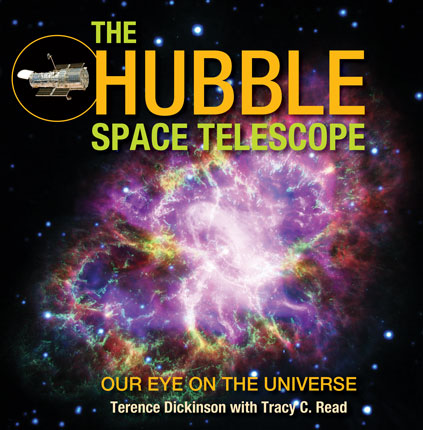| Hubble Space Telescope : our eye on the universe Author: Dickinson, Terence | ||
| Price: $6.50 | ||
Summary:
Aided by photographs from Hubble, this book describes how Hubble gathers imagery and transmits it to Earth and discusses the telescope's top discoveries. It also explores the stormy weather on our solar system's planets and moons, star clusters, nebulas and the Milky Way Galaxy, star nurseries and Hubble's glimpses of distant galaxies in deep space.
| Added Entry - Personal Name: | Read, Tracy C |
Reviews:
Kirkus Reviews (07/01/19)
School Library Journal (10/01/19)
Full Text Reviews:
School Library Journal - 10/01/2019 Gr 6–8—In a photograph, galaxy UDFj-39546284 looks like a faint dot of starlight in a dark field, surrounded by much larger and brighter bodies. It's believed to be the oldest and most distant star cluster ever observed from Earth, a galaxy formed just half a billion years after the big bang. Many of the images in Dickinson and Read's lushly illustrated volume are particularly striking, resembling abstract paintings or backgrounds from science fiction book covers. For example, a mosaic photo of the Eagle Nebula, known as the Pillars of Creation, shows "three giant columns of cold gas…bathed in the scorching ultraviolet light from a cluster of young massive stars embedded in the nebula." Each of the five chapters opens with four paragraphs of introductory narrative text followed by several pages of photographs taken from the telescope, most with detailed captions. Some photos are assembled from as many as 400 Hubble images. Sidebar texts explore related topics such as the significance of the telescope's namesake, early 20th-century astronomer Edwin Hubble, or a brief explanation of the top six scientific discoveries made with the telescope. However, no overarching narrative unites the caption texts, and at times they can seem disjointed. The book includes an index and one page of photo credits, but no source notes or bibliography. VERDICT The lack of sourcing and consistent context makes this a weak choice for research, but it could be a great addition for middle school libraries to spark interest in astronomy.—Bob Hassett, Luther Jackson Middle School, Falls Church, VA - Copyright 2019 Publishers Weekly, Library Journal and/or School Library Journal used with permission.



